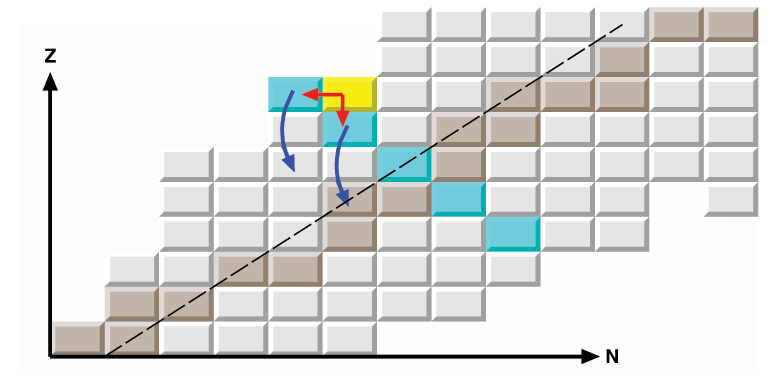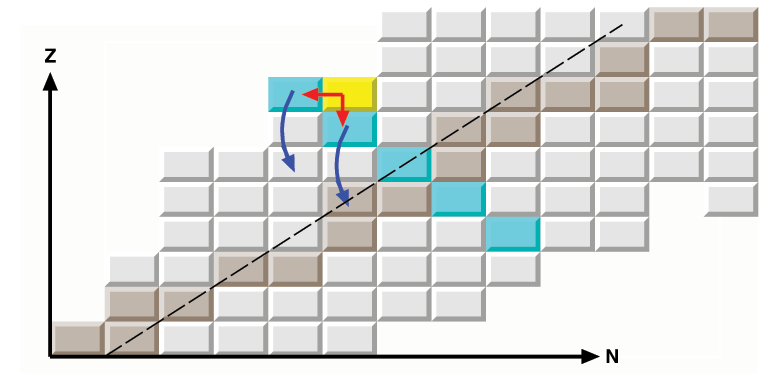Neutron Knockout
Unstable nuclear states that decay by emitting protons or neutrons provide important tests for models that are based on properties of nuclei close to the line of stability. They also permit tests of the isospin symmetry—a quantity related to the dominant component of the strong nuclear force—to determine if certain nuclear properties are unchanged if a neutron is replaced by a proton and vice versa.
One of the rarest decay modes of unstable nuclei is the essentially simultaneous emission of two protons. In a paper in Physical Review C, Marieke Jager at Washington University, Missouri, and collaborators report results from an experiment in which they observed two different -proton decay modes. In a beam of an isotope of oxygen, , either a neutron or a proton was knocked out, leaving and , respectively. The -proton decay of these to and gave valuable information on the mass and lifetime (equivalent to a property called the width of the state) of states in and . The mass and width for the ground state turn out to be considerably smaller than what was known from previous measurements and resolve a discrepancy behind the theory for the width. The properties of the isobaric analog state in —analogous to one in , except that a neutron replaces a proton—are measured here for the first time.
These results permit a successful test of a -parameter equation, called the isobaric multiplet mass equation, that relates the masses of nuclei in the same state (here , , , , and ) with the same total number of nucleons, simply in terms of the respective numbers of protons and neutrons. – Rick Casten and John Millener





